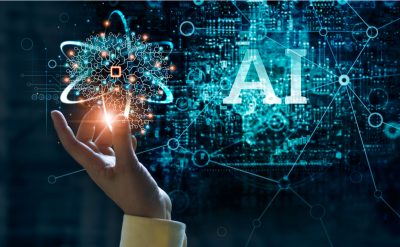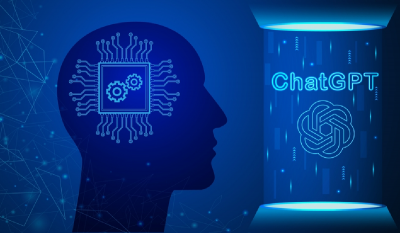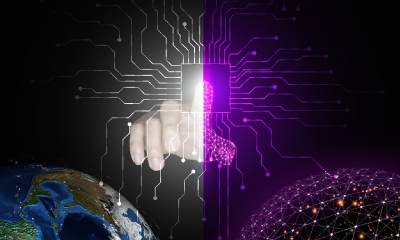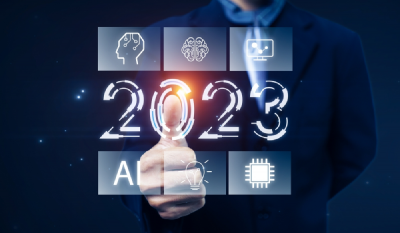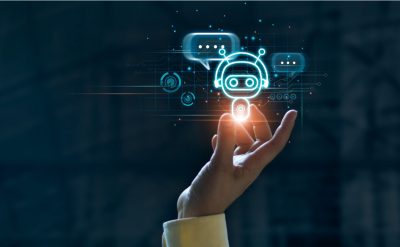Today, artificial intelligence (AI) is present everywhere. Specialized tasks like self-driving cars and Siri or Alexa as personal assistants, chatbots, and email scheduling associates can effortlessly cover the routine tasks of humans. Such examples show artificial intelligence is disrupting much of the digital human lives, but it seems tricky to describe the extent of its impact.
Every industry has now included AI in its offering while the rest are preparing to do the same. While doing so, there arise many misconceptions about what AI is and what it can do.
Check on myths and reality of AI
Myth #1 – AI is going to take away human jobs.
Reality – AI will upgrade jobs and create new ones.
AI and automation have seriously affected labor work in many areas. The earlier industrial revolution has transformed the employment landscape, such as a mass shift from agriculture to factories during the 19th century. Witnessing such incidences assures that AI will for sure automate some jobs while creating new ones.
There are still some areas where AI cannot work successfully, especially those that need social and creative intelligence. For example, an AI system can help detect a patient’s illness, but it cannot reply to their questions or adverse reactions with human empathy.
No doubt, jobs that will complement AI programming will also be created. For instance, AI systems rely on big data, so there will be demand for people who find, generate, and clean data generated by big data.
Myth #2 – Artificial intelligence and machine learning are the same.
Reality – Both are two different concepts.
Artificial intelligence (AI) and machine learning (ML) technology are often used alternatively, but both technologies have different concepts; even though the technologies seem closely related but are not the same.
The concept of AI refers to machines reflecting human-like intelligence using different techniques, wherein machine learning is one of those techniques. AI ultimately aims to develop an intelligent system that would simulate human thinking and intelligence. On the other hand, machine learning directs a system to learn from the provided data and generate the desired output.
So, AI tends to make machines more human-like; ML tries to make machines learn like humans.
Myth # 3 – AI can work without human assistance.
Reality – AI is dependent on humans.
AI systems can learn on their own without any human assistance – this is a false assumption. AI systems depend on humans to design problems, formulate solutions, assign tasks, and provide information to learn. Data scientists spend considerable time structuring and creating different methods that need to be implemented in AI machines.
People are under the impression that AI machines are capable enough to learn on their own. But in reality, machines have not yet reached that point where they are smart enough to make their own decisions.
For instance, an AI-powered chatbot can improve customer interactions, thus contributing to an increase in sales. These chatbots need to be trained continuously with customer interactions datasets, as standard FAQ-based chatbots create a better customer interaction experience.
Another example could be AI-enabled technologies that can help automate threat detection and response without human interventions. This can be possible only when hackers or cybercriminals harness the power of good AI algorithms and exploit digital systems. It signifies those human leads from cyber defense organizations must be prepared to prevent evolving cyberattacks.
Myth #4 – Machines possessing neural networks can work like a human brain.
Reality – Machines with neural nets are far from achieving the complex structure of a human brain.
Many people have a thinking that AI can perform all those tasks that humans can do. In reality, neither computer scientists nor neuroscientists are still clear about the interactivities of human brain activities. The artificial neural network, a subset of AI, was inspired by how the human brain works. The working of the human brain is still considered a mystery and a complex query to solve. Another significant difference is that AI functions on computer hardware, while the human brain is biological.
Another concept of AI involves deep learning, which is again based on artificial neural networks. In this method, the computer chips emulate the way biological neurons learn to recognize any pattern. This technique is implemented in multiple tasks such as improving language translation, speech recognition, fraud identification, image recognition, and self-driving cars.
Myth #5 – AI demands experts’ involvement and high investment to use AI for businesses.
Reality – Ready-to-use tools are available for business users at affordable prices.
Some businesses require data scientists, machine learning experts, and huge budgets while formulating AI techniques in their processes. As a solution, ready-to-use software tools are designed so that businesses can use them easily.
At one point in time, AI technology does require deep expertise in programming language and sophisticated learning. Companies such as Google, Apple, Amazon, Facebook, and well-funded start-ups’ will use business applications over ready-to-use tools developed by their in-house sources.
For instance, by using Alexa, Amazon has already found a solution for speaker-independent voice recognition and noise cancelation technology, allowing the use of voice commands in any environment. Thus, developing a voice interface for business applications seemed easier to solve any query. This implies that the actual business value lies in using existing AI tools. It shows that processes require less data science expertise and more knowledge of core business processes and needs.
Wrapping up
There are multiple misconceptions about AI in human minds. To overcome it, people need to accept the growing phase of each technology. Change is constant, and one needs to be ready for it.
The conclusion is that instead of believing myths, people should believe in AI. It is part of the inevitable evolution of how humans use tools and technology. So, before imbibing artificial intelligence into current business processes, it is important to clear its misconceptions.
For more information visit our latest whitepapers on artificial intelligence and other technologies here.








